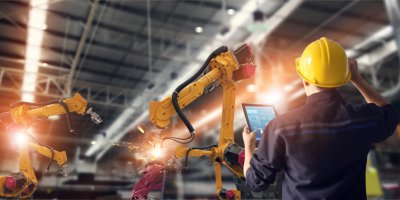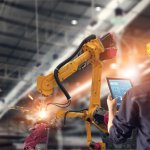
Source: Shutterstock
Here’s how tariff have impacted robotics and why it matters
THE general view of industry leaders on import tariffs is that it appears as a tax on end users and it will eventually slow down economic growth. Further, it could increase the risk of unintended consequences.
At least that was what Apple CEO Tim Cook told US President Donald Trump during his visit to the White House.
While Apple products did eventually get a tariff reprieve, Cook still blamed the consumer tech giant’s relatively weak earnings on the two-way tariff which is part of a broader trade war between the US and China.
Experts believe that although the influence of the trade war is immense, affecting a range of products and services, from motor-vehicles to produce, its impact on the tech industry has been especially far-reaching.
According to US Consumer Technology Association President and CEO Gary Shapiro, the cost of the tariff and the uncertainty around additional duties and export controls is threatening US’ global leadership in 5G, artificial intelligence, and robotics.
“The tech industry – responsible for 10 percent of U.S. GDP and more than 15 million American jobs – has already been dealt an enormous blow by tariffs this year. Our industry can’t continue to pay one billion dollars extra in tariffs every month — tariffs are taxes,” he said.
From the onset of trade wars, manufacturers have been dealt with the options of either hiking price or absorbing cost – neither of which is particularly exciting given the uncertain global business climate – and it has left vital drivers of robotics out in the cold.
Moreover, the rise in the price of steel import had also hit the robotic industry pretty hard.
In a recent interview by a news outlet, Andrew Storm CEO of an industrial robotics company said the price hike had put enormous pressure on his business.
Meanwhile, IDC’s research director John Santagate claims that there is a noticeable impact of the tariffs on the manufacturing industries, primarily the automotive sector, which are the traditional buyers of industrial robotics and automation technology.
Storm added, “There was a bit of a slip in 2018 in term of orders of robots to automotive manufacturing, but we also saw a significant increase in orders of robots in other industries. The growth of robotics in other industries is showing strong growth, that will likely continue regardless.”
In short, while the tariffs that stemmed from the US-China trade wars have negatively affected the robotic solutions providers and the industries that rely heavily on the technology in some ways, it is yet to have a significant impact on the inevitable rise of technology.
However, if the trend continues to hold, the growth and development of robotics will start stalling, which will considerably reduce productivity and affect the digital journey of many industries globally for years to come.
READ MORE
- Ethical AI: The renewed importance of safeguarding data and customer privacy in Generative AI applications
- How Japan balances AI-driven opportunities with cybersecurity needs
- Deploying SASE: Benchmarking your approach
- Insurance everywhere all at once: the digital transformation of the APAC insurance industry
- Google parent Alphabet eyes HubSpot: A potential acquisition shaping the future of CRM




